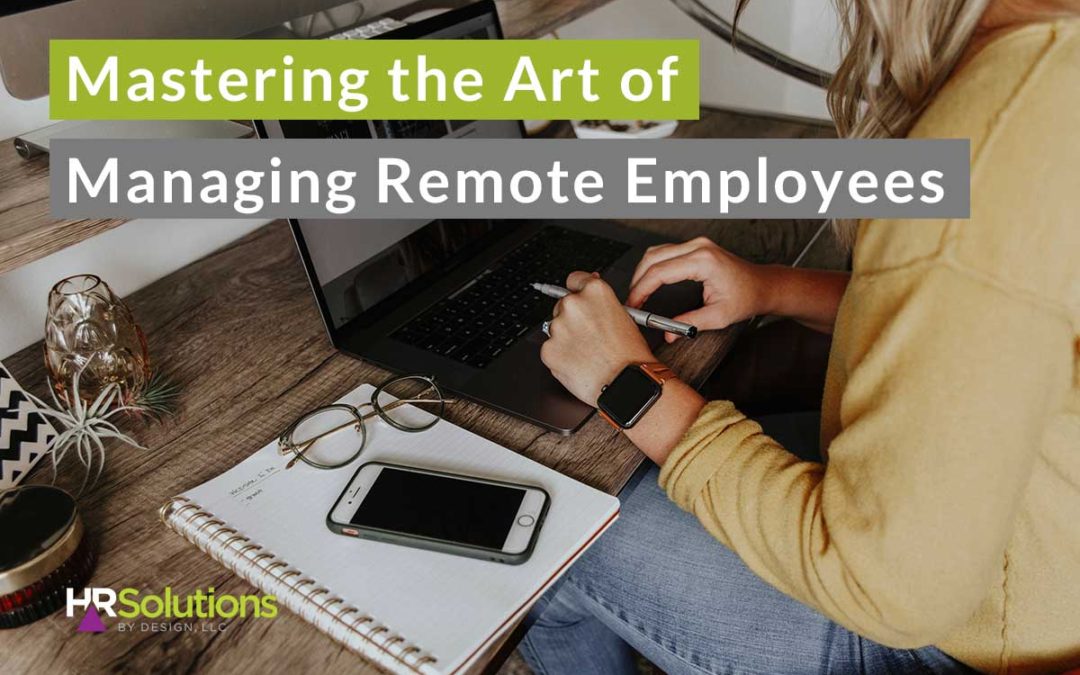Let’s face it, making the mental leap to managing remote employees can be one of the biggest challenges you’ll face as you consider implementing a telework policy. Most leaders, especially Baby Boomers, are accustomed to managing based on what I call “butts in seats” and visible activity levels. If you’re a more traditional minded leader you may find the shift to remote work uncomfortable and awkward. Employees, too, may struggle as they adjust to working from home and learn to productively schedule their day.
Mastering telework may require you, as a leader, to loosen the reins and find innovative ways to holding employees accountable. Because you can’t continuously monitor your employees working from home, success will depend on your ability to find ways to focus on the expectations established what gets done and whether it meets the required quality standards. You may also have to become more innovative with respect to leveraging technology to overcome perceived and real barriers to productivity and communication.
In other words, successful pivots to virtual work – whether planned months in advance or in response to a natural disaster or COVID-19 – will require you to be willing to recalibrate how you lead your people.
You will also need to become familiar with telecommuting best practices and be willing to be agile and flexible as you learn from your mistakes.
So how do you manage a remote workforce? Here are our top 5 tips:
- Understand the challenges your employees will face
- Feelings of Isolation
- Communication barriers and breakdowns
- Distractions
- Establish and agree on clear expectations
- Ensure employees have access to the tools and resources needed
- Technology
- Security
- Training
- Plan for days and times to get the team together
- Follow-up regularly
1. Understand the challenges your employees will face
- Managing Isolation – Humans, in general, are social creatures and desire human interaction. As such, many employees struggle with the isolation of telework. As a leader, look for creative ways to create “virtual” interactions for your team to help bridge the gap.
- Communication Barriers – Communicating openly, honestly and effectively is key to a successful telework arrangement. It’s critical for you and your employees to work together to ensure timely and accurate flow of information. There is nothing more frustrating for an employee than feeling like they don’t know what’s going on and discovering key information after the fact. Work directly with your employees to set expectations with a focus on communication effectiveness, including timeliness, content, method and recipients.
- Distractions – It’s tough learning to work from home. Most employees have never had to juggle the difference between work time and personal time. Often when making the leap to telework, employees and family members struggle separating the two. Provide guidance and resources to employees to help them learn to separate the two. For example, encourage employees to get up at a “regular” time, get dressed for work, and then actually “go” into the home office. This approach encourages employees make the mental leap to telework and helps their family members many of whom believe, “you’re home, so can’t you do the laundry too!?”, make the mental leap too.
2. Agree on Expectations
Leaders who leave performance and behavior expectations to chance, often suffer the consequences and so do their employees and organizations. Talk to your employees about productivity, quality, accuracy, safety and behavior standards and agree on those expectations up front. That way, if an employee is not meeting the agreed expectations, they can’t say they didn’t know what was expected from the very beginning and they are less likely to be upset when you discuss performance or behavior issues with them. Also be sure to talk about expectations for notifying you or other leaders in the event personal circumstances, such as illness or dependent care responsibilities, interfere with their ability to fully perform their job duties. You may need to be flexible and modify work hours, work responsibilities and/or work deadlines.
3. Ensure employees have access to the tools they need
Remote employees need the same access to things utilized by onsite employees, which may include (but are not limited to):
-
- Employee handbook and other policy or procedure manuals
- Marketing collateral – presentation templates and supplies
- Office supplies
- Computer Hardware and/or Software
- Corporate credit card
Be sure to consider who will pay for these items.
4. Plan for days and times for the team to connect
Ensuring your employees feel connected during telework is vital to telework success. Establish a regular time to get the team together on a conference call so they can “see” each other and rekindle those connections. Zoom and Teams are both great options for this.
5. Follow-up Regularly
Establish a follow-up schedule to review work progress, answer questions, adjust goals, etc. If you have any questions or concerns about what your employee is doing or the quality of their work, don’t wait until it gets out of control to ask questions and offer help and guidance. Saying nothing and hoping it improves is NOT a good strategy – silence implies the performance or behavior is ok.


